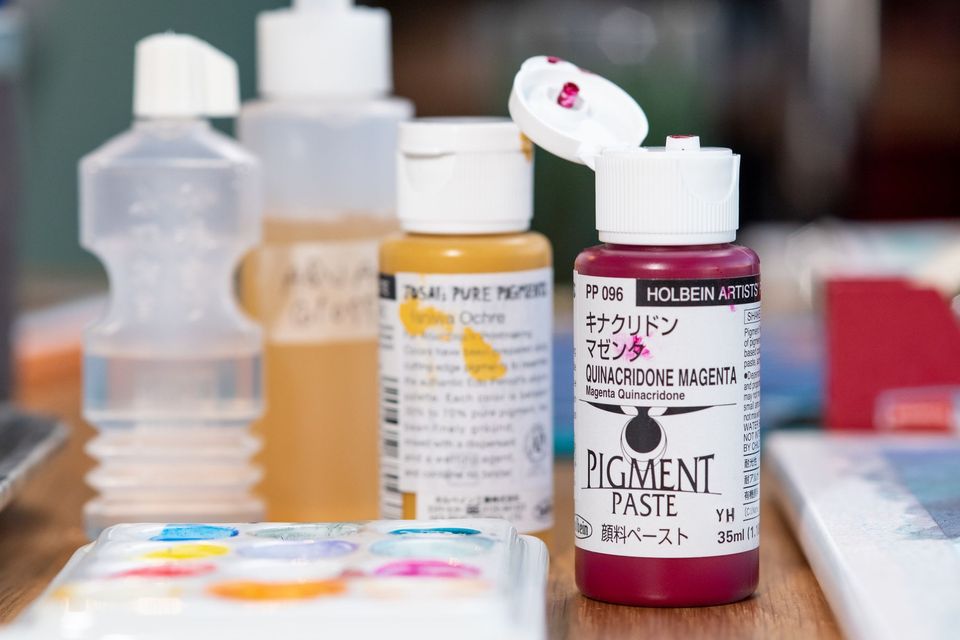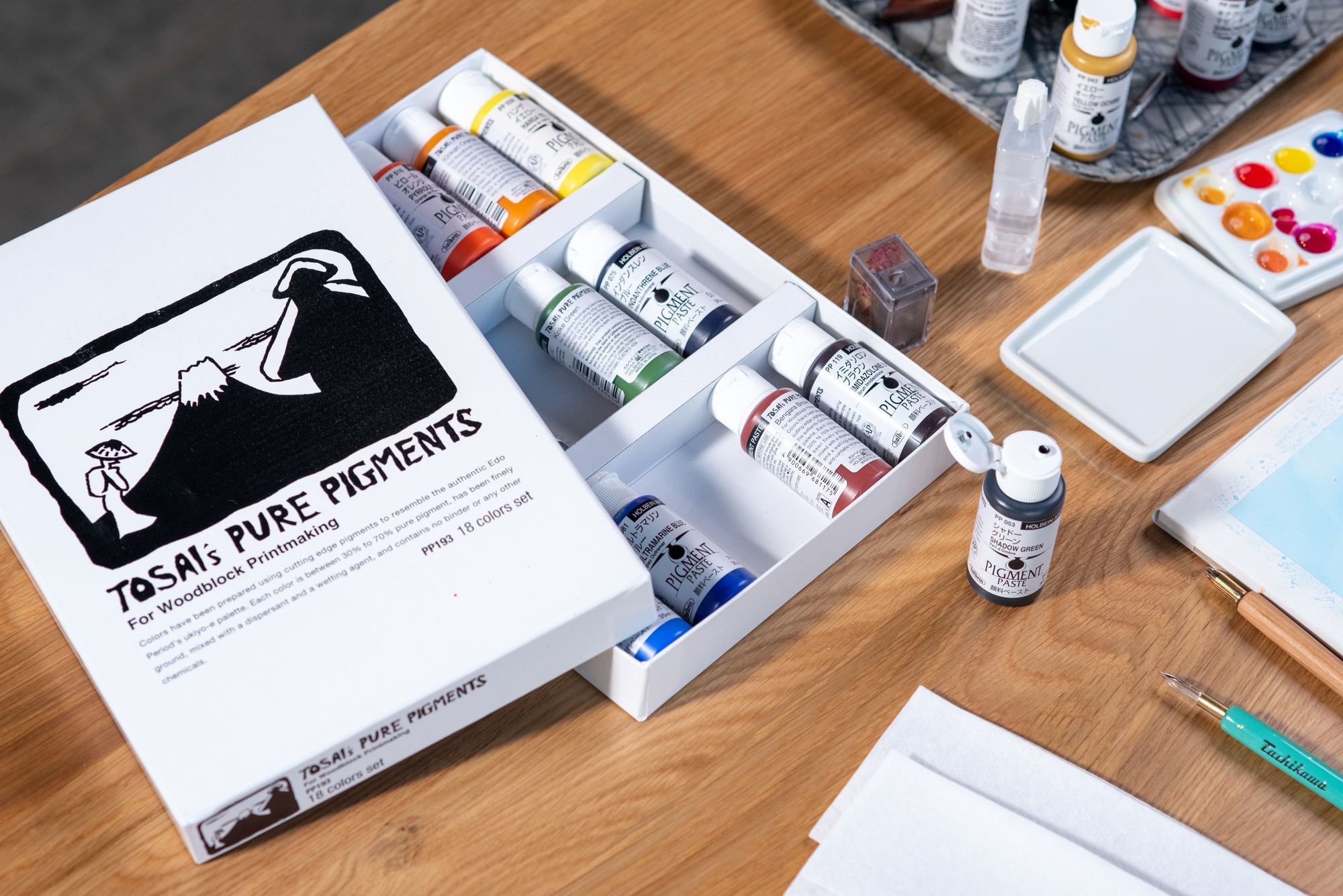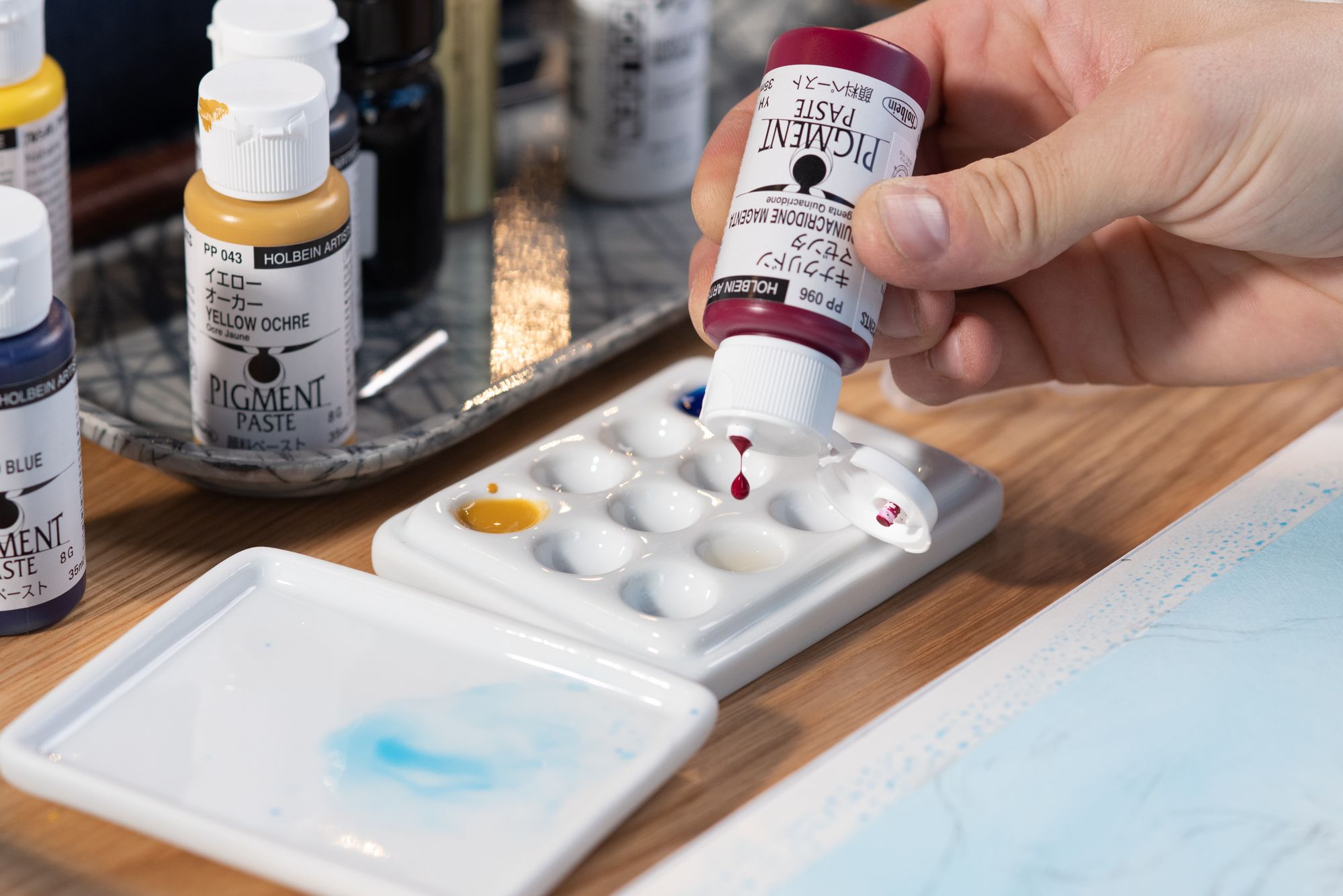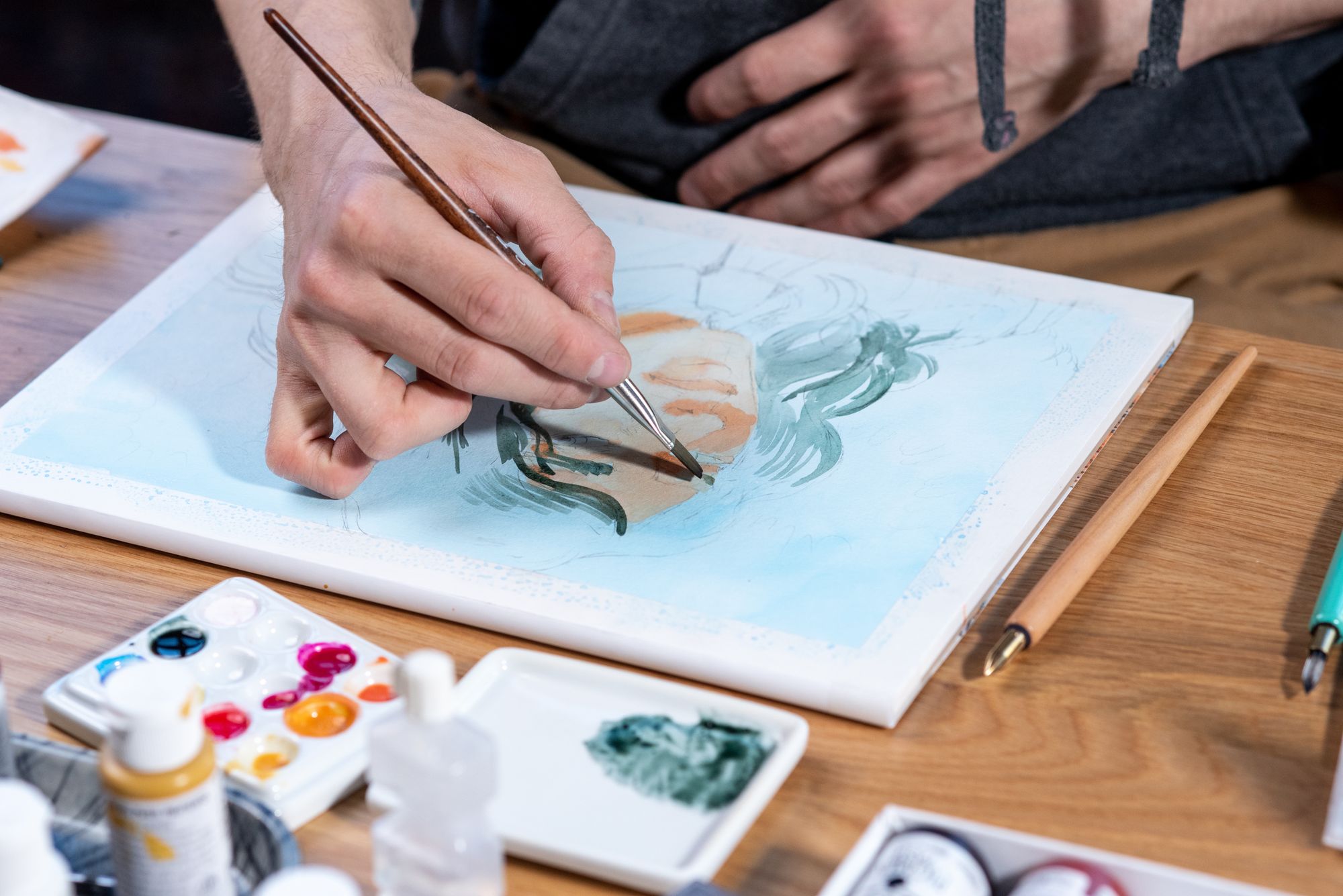Product Test: Holbein Pigment Paste

We recently started carrying Holbein Pigment Paste, a clever new product from one of the world's great color manufacturers. From a quick glance at the bottle, you might think it was paint or ink, but in fact, this is a highly concentrated pigment that you can use to make or modify any water-based artist color.
That means you can use the same set of intense, finely milled pigments to make watercolor, acrylic paint, india ink, watercolor, sumi ink, and any other water-based medium you can think of.
Of course, we couldn't resist taking the first set of 18 out of our shipment and trying it for ourselves. Here are three key things we learned:
1. Prepare your work space

If you're accustomed to using premade artist colors, you might be surprised—as we were—how strong these little bottles are. They will pigment anything they touch, so you should handle them a bit more carefully than paint. (The good news is that all Holbein Pigment Paste colors are non-toxic, so the worst that'll happen is a stain.)
Before you start, you'll want to have paper towels, clean water, and any tools you'll need. (We used Kuretake disposable droppers to transfer colors, a butcher tray to hold our bottles and ink brushes, and a small palette knife for mixing.)
2. In most cases, a drop or two is enough

We started by filling the wells of a 12-Well Mini Porcelain Palette with watercolor medium (in this case, Schmincke Aqua Gloss, but you can use any brand you have in your studio.) It's a good idea to dispense a sizable amount of the medium or paint you plan to color with Pigment Paste in advance, because the ratio of pigment to medium is very low. That means the pigment won't add much volume, so you don't have to worry too much about overflowing the well.
Next, we added roughly two drops of Pigment Paste to some of the wells and stirred. This produces a very thick watercolor, and we created a range of values with each tone by mixing a bit of the concentrate into a fresh well of medium. You can also add a drop or two of water, but keep in mind that this will change the consistency as well as the value.

3. Perfect color matching in mixed media

One of the best features of Pigment Paste is the ability to use different media with precisely the same colorant. This is especially useful for mixed media artists, who may (for example) want to match their tinted gesso to a color in their painting.
We used Pigment Paste for a classic illustration technique: painting a loose first layer in watercolor, then defining the hard lines with an ink pen. But rather than using black lines, which can sometimes stand out too much from the painting's color palette, we made acrylic ink with Shadow Green pigment paste.
Matching permanent ink lines to a watercolor wash is not an easy task with traditional media, but with Pigment Paste, it's simple, allowing you to use harmonious colors for every stage of your mixed media work.

Ready to get started?
We've got the full line of 20 Holbein Pigment Paste colors, plus the set of 18 we used for our studio test. And to help you choose (not just because it was fun), we hand-painted a swatch of each pigment prepared with watercolor medium. Click the button to see the full collection: